
The Bottom Line
Introduction, Specifications, and Pricing
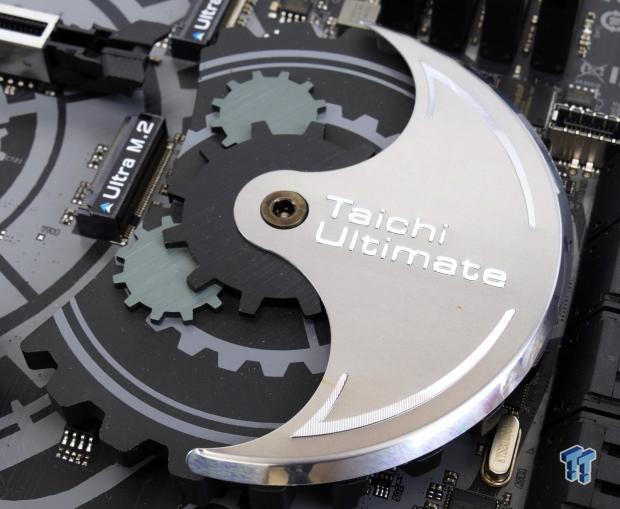
Today we look at the Z390 Taichi Ultimate, which fills in an interesting gap between the Phantom 9 and the Taichi. ASRock's Taichi series of motherboards has been hugely successful, offering up a lot of features, a solid VRM, and good aesthetics at a very reasonable price. The Z390 Taichi Ultimate features a 10Gbit NIC, which is one of its biggest advantages over the Taichi and even the Phantom Gaming 9. Let's see what it has to offer.
Specifications

The Z390 Taichi Ultimate features three M.2 slots, WIFI, Intel LAN, 10G LAN, USB 3.1, and SATA6Gb/s.
Pricing
The Z390 Taichi Ultimate costs $279.99
Packaging and Z390 Taichi Ultimate Overview
Packaging and Overview
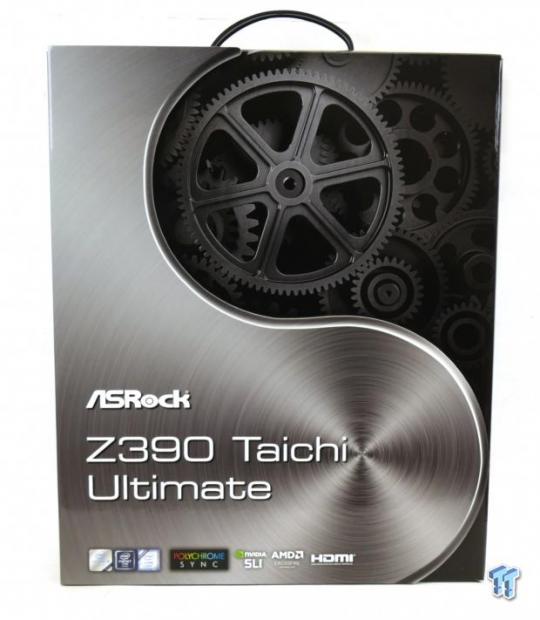
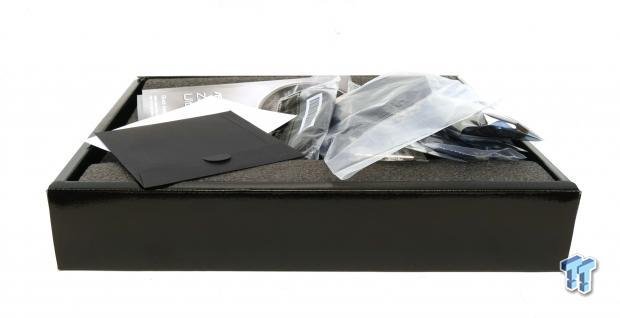
The box is very similar to the normal Taichi, but the packaging is better in that it's a bit more high-end.
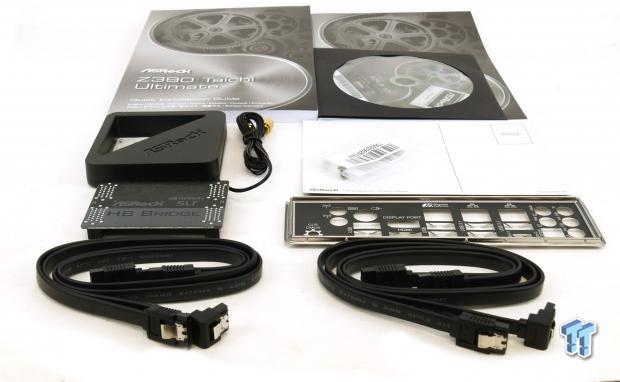
The accessory package includes four SATA6Gb/s cables, WIFI antenna, SLI HB bridge, rear IO shield, M.2 screws, Post Card, Driver DVD, manual, and a case badge.
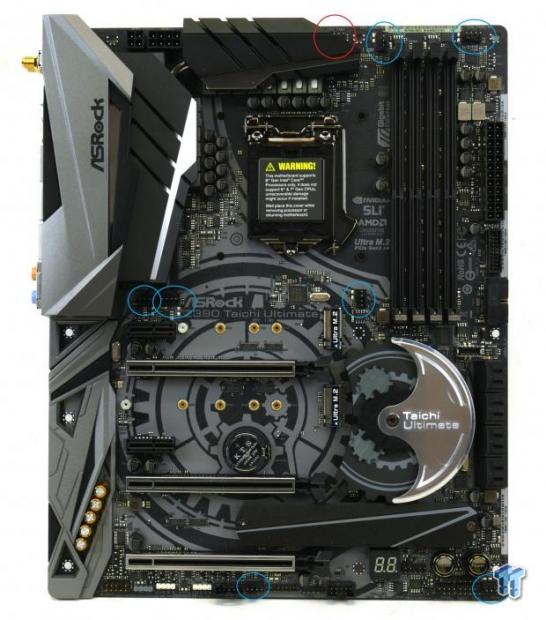
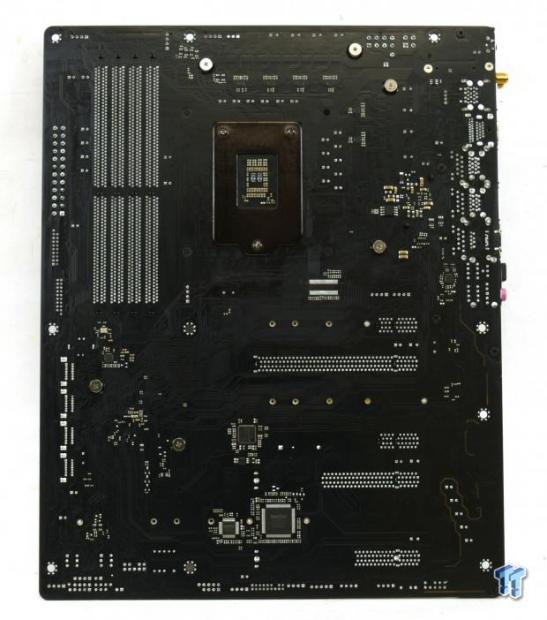
ASRock has increased the number of fan headers to a total of eight, while most of their previous Taichi's only had five. All the headers circled in blue are hybrid PWM/DC mode headers rated up to 2A, the one header circled in red is a PWM header. The motherboard's sleek black and silver aesthetics is the trademark Taichi look, and they have updated the silkscreen and heat sink matching, which looks quite good. The rear of the motherboard does feature some components.
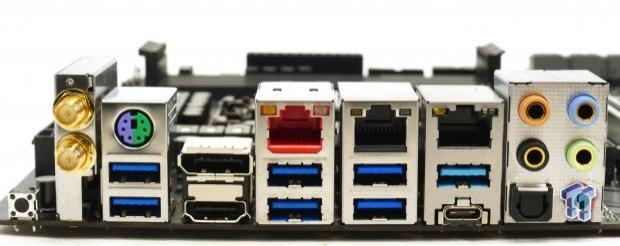
The rear IO panel features WIFI antenna, three USB 3.1 type-A ports (two are normal blue under the non-red NIC port), USB 3.1 type-C port, four USB 3.0 ports, PS/2 keyboard/mouse, Clear CMOS, DisplayPort, HDMI, 10G LAN, two 1G LAN, and gold plated 7.1 audio outputs with S/PDIF.
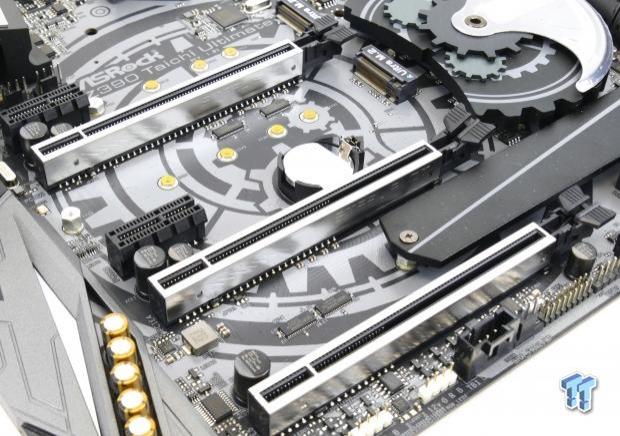
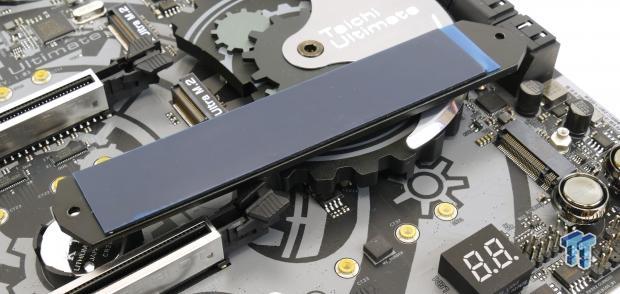
The PCI-E layout is as follows, x16/x0/x0, x8/x8/x0, or x8/x4/x4. The bottommost M.2 slot has a heat sink.
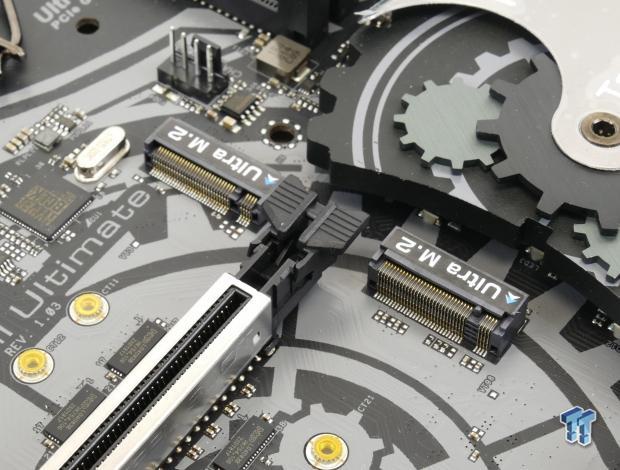
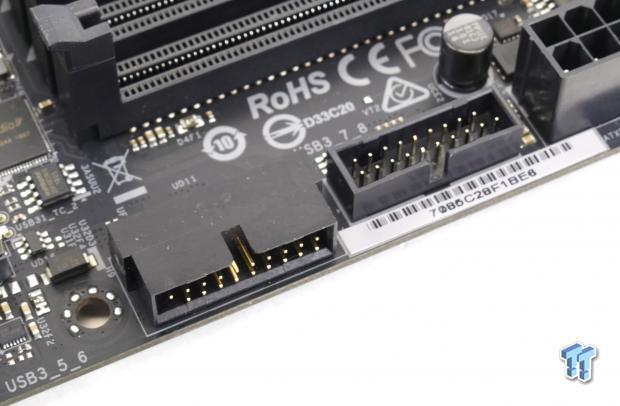
All the M.2 slots are rated up to x4 PCI-E 3.0 and offer SATA mode, and they all share lanes with the SATA ports from the PCH. There are two USB 3.0 internal headers on the motherboard; one is right angled.
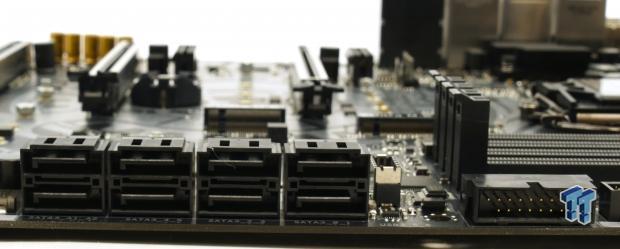
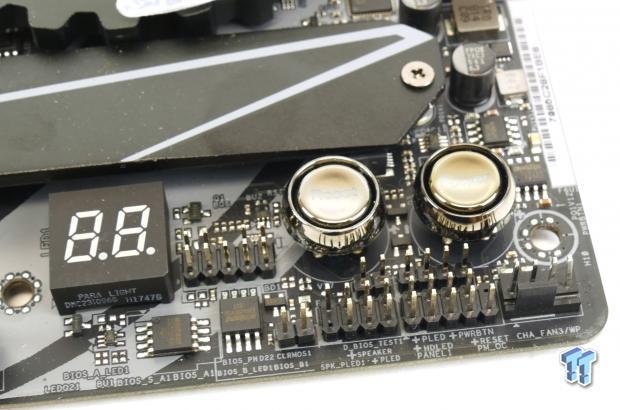
There is also a USB 3.1 type-C header on the motherboard. A total of eight SATA6Gb/s ports are on the motherboard, two come from an ASMedia controller. There is a power button, reset button, and POST code display on the motherboard.
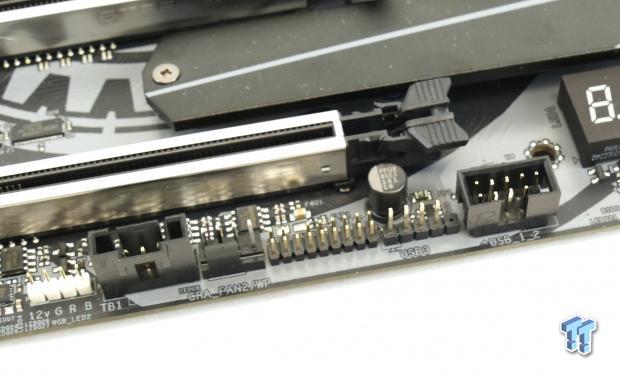
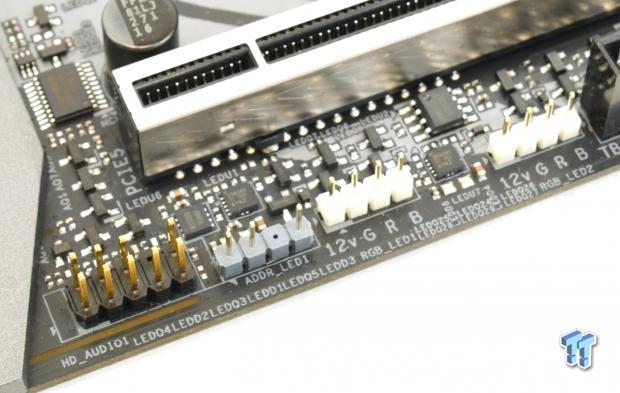
At the bottom of the motherboard, we find a USB 2.0 internal header, a half USB 2.0 internal header, a Thunderbolt GPIO header, and an RGB LED header. Further to the left, we find an addressable RGB LED header, and another RGB LD header.
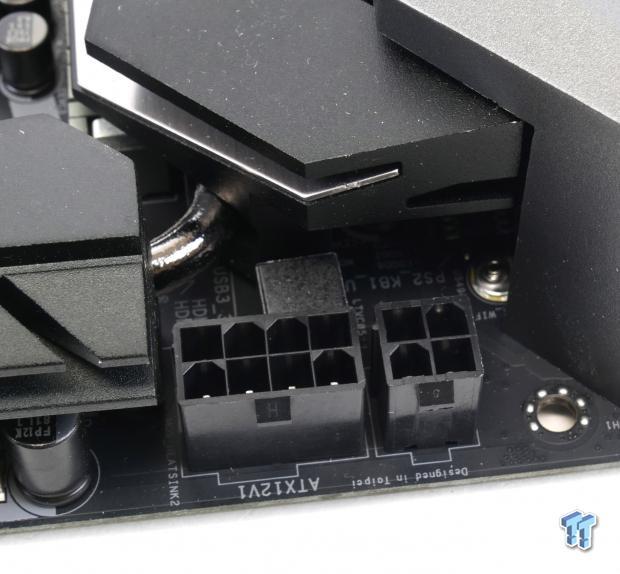
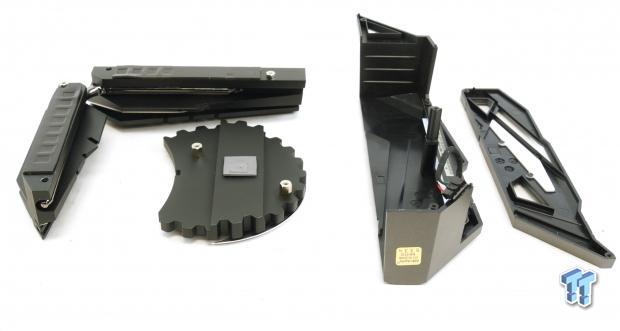
At the top of the motherboard, we find an 8-pin CPU power port and an optional 4-pin port. The heat sinks make good contact with the motherboard.
ASRock Z390 Taichi Ultimate Circuit Analysis
Circuit Analysis
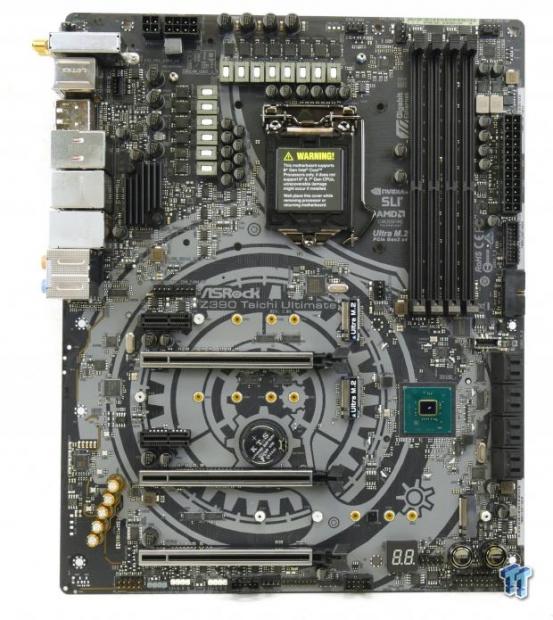
The Z390 Taichi Ultimate shows us the goods with the heat sinks removed!
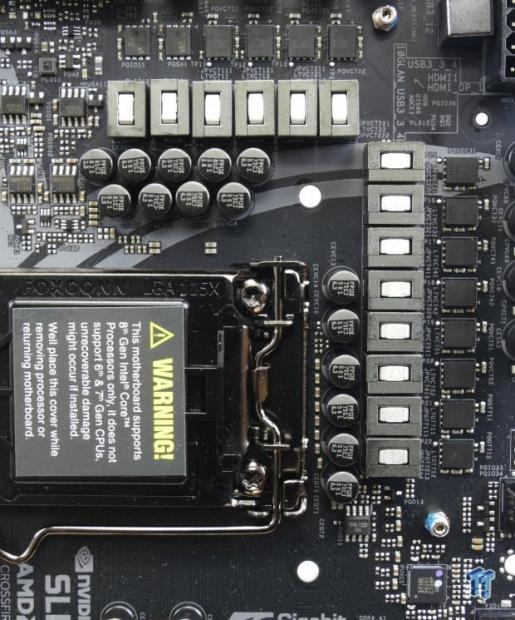
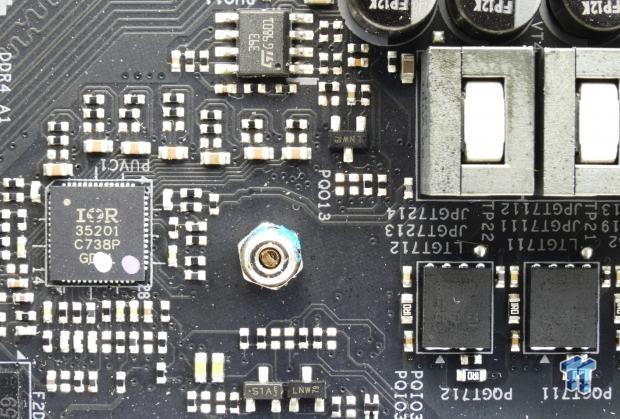
The VRM is in a 10+2 phase configuration, and uses six IR3598 doubler/dual drivers on the back of the PCB. Five of these IR3598 are in doubler mode, while one is in dual driver mode for the two iGPU phases. The IR35201 digital PWM controller is used in 5+2 phase mode. ASRock is using the high-end Texas Instruments 40A NexFETs, the CSD87350 dual N-channel MOSFETs, along with high current inductors for both the CPU and iGPU phases.
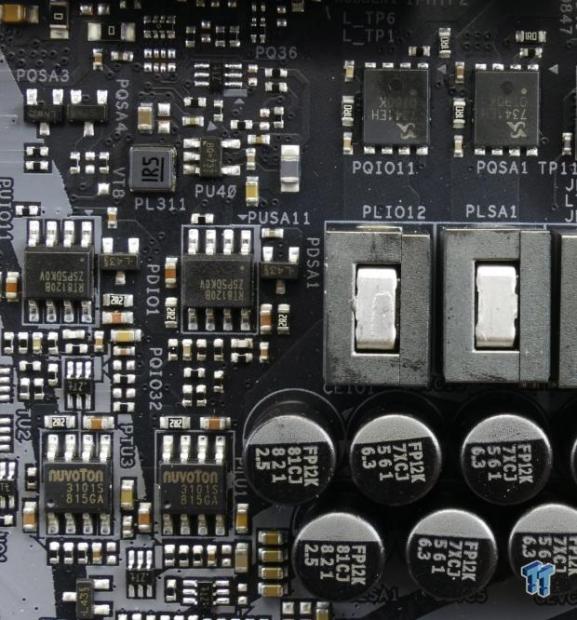
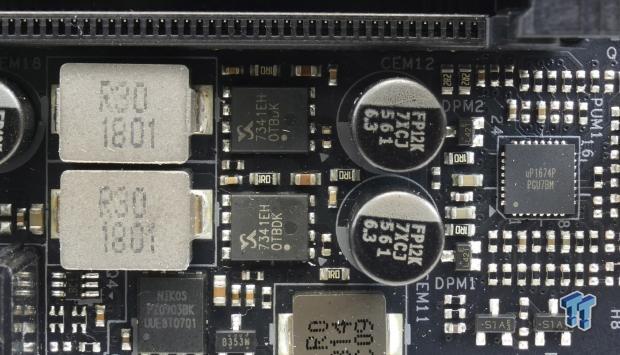
The VCCSA and VCCIO are controlled by Richtek RT8120 single phase PWMs with integrated drivers and use Sinopower dual N-Channel SM7341EH power blocks. Memory is controlled by a UPI uP1674 PWM controller, which then controls two Sinopower SM7341EH power blocks. The VRMs are very similar to those on the normal Taichi.
ASRock Z390 Taichi Ultimate Circuit Analysis Continued
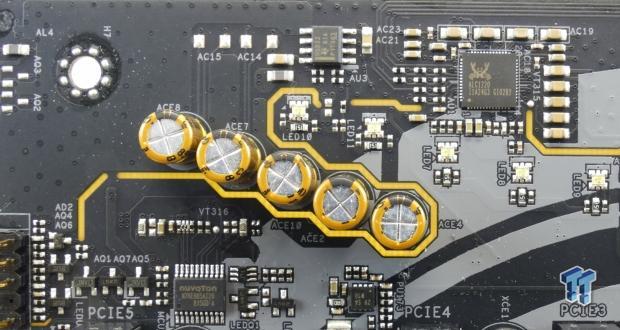
The audio solution consists of a Realtek ALC1220 rated up to 120dB with integrated amplifier going to the rear IO panel, an added NE5532 for front audio amplification, and Gold series audio capacitors.
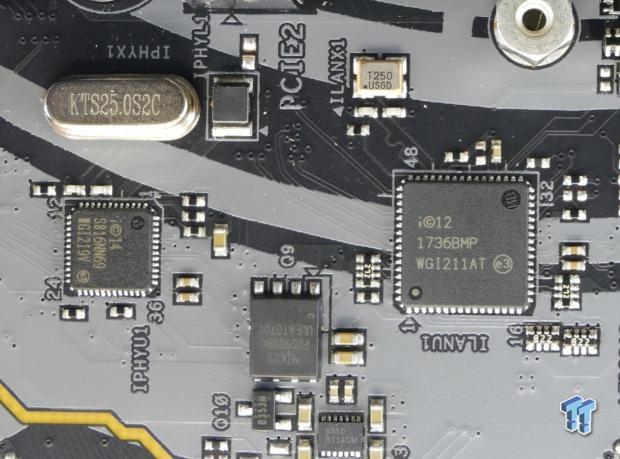
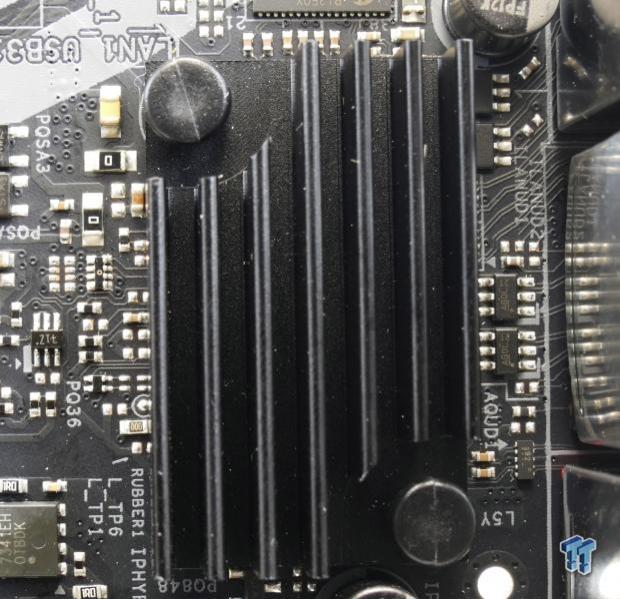
We find an AQC107 from Aquantia, but we weren't able to get the heat sink off for a picture. The two other Gbit NICs are from Intel; an i219v and an i211AT.

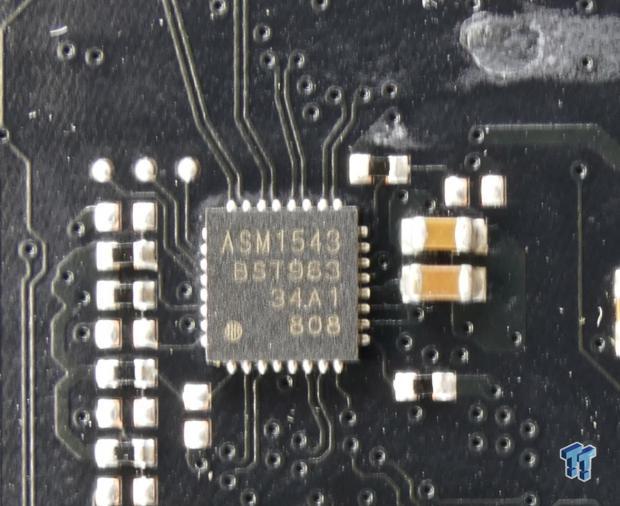
The front USB 3.0 internal headers are from an ASMedia ASm1074 hub. The ASMedia ASM1562 is a re-driver for the USB 3.1 internal header, and we find an ASM1543 type-C switch on the back for that internal header.
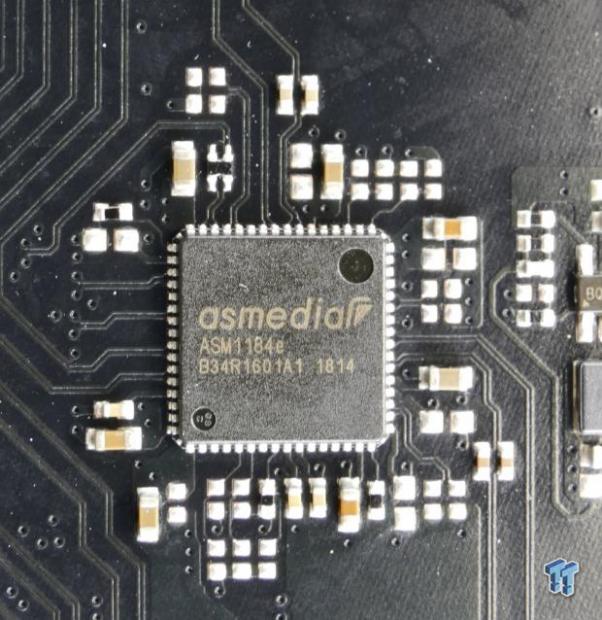
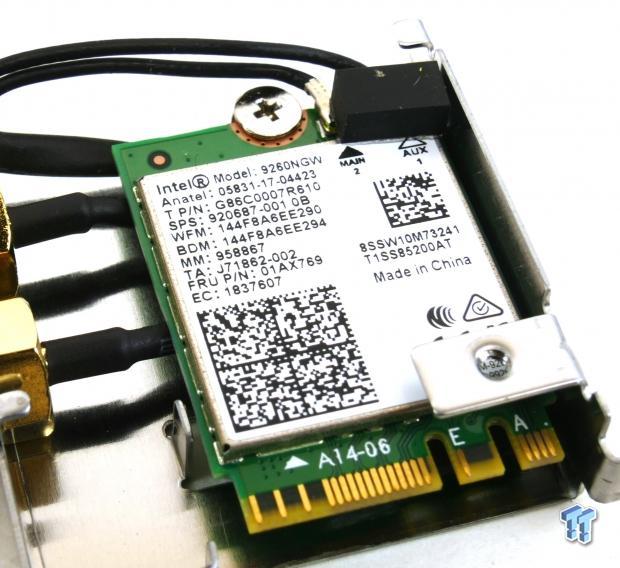
For the extra SATA controller, WIFI card, and PCI-E x1 slots we find an ASM1184e PCI-E hub that will increase lane count for these low bandwidth devices. Since ASRock used that hub, they bypass Intel's CVNI ports in the PCH, so they used the non-CVNI version of the new Wireless AC 1.733Gbps cards, the 9260NGW. That also means in the future you can move this card into any WIFI M.2 slot and it will work, while on other boards that use CVNI ports, you will have to have CVNI (which is custom proprietary to Intel).
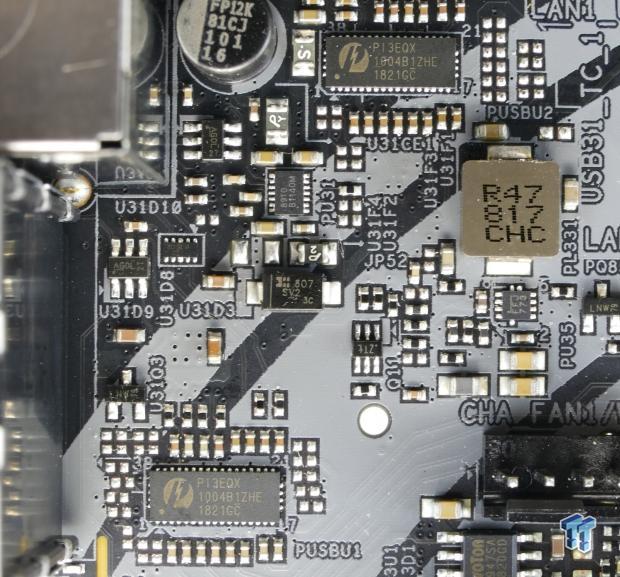
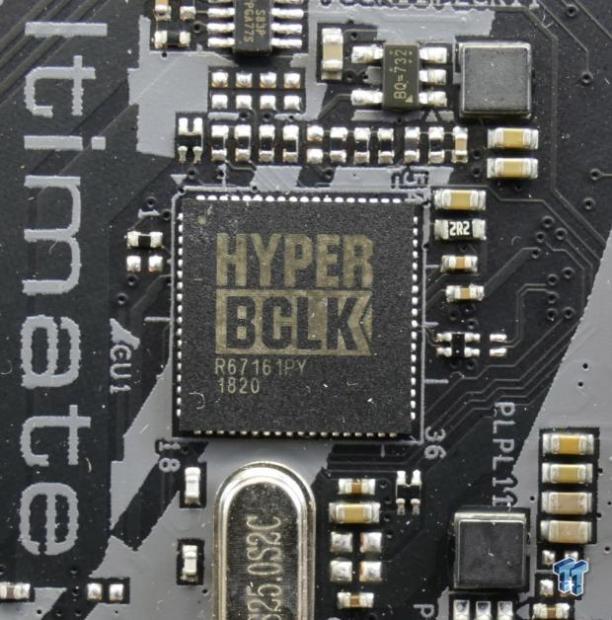
We find two Pericom PI3EQX dual port re-drivers for the four rear USB 3.1 ports. We also find a HyperBCLK chip on the motherboard; this chip is used to increase BCLK OC margins.
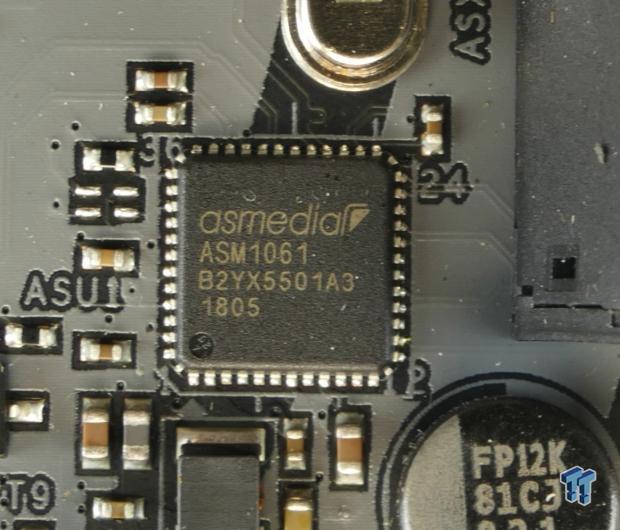
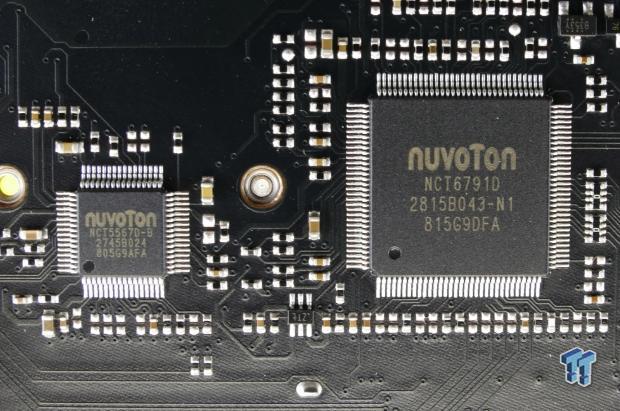
An ASMedia, ASM1061 is used to add two SATA6Gb/s ports. The main SuperIO is a Nuvoton NCT6791D, and a Nuvoton NCT5567D is used to expand fan control.
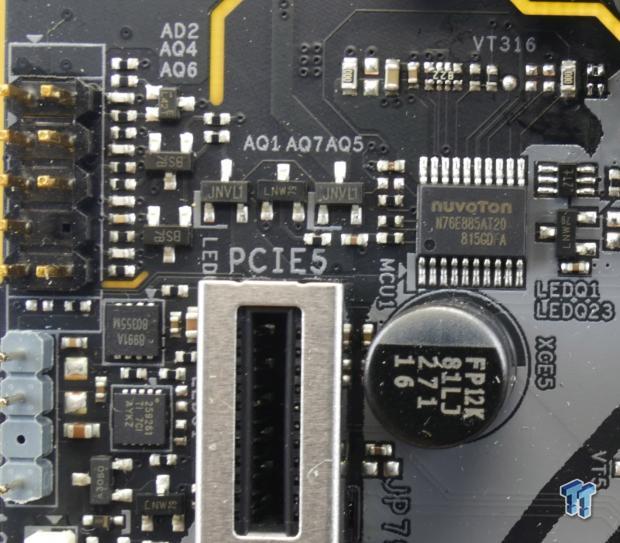
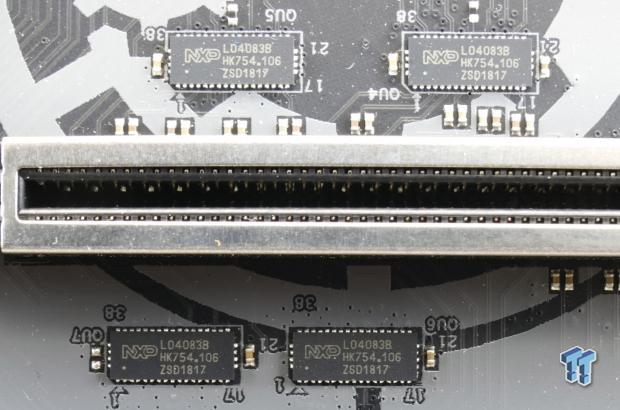
A Nuvoton N76E885AT is used to provide RGB LED control, and there is a Texas Instruments eFuse on board for the headers. We find many NXP quick switches used to switch around PCI-E and SATA bandwidth.
BIOS and Software
BIOS
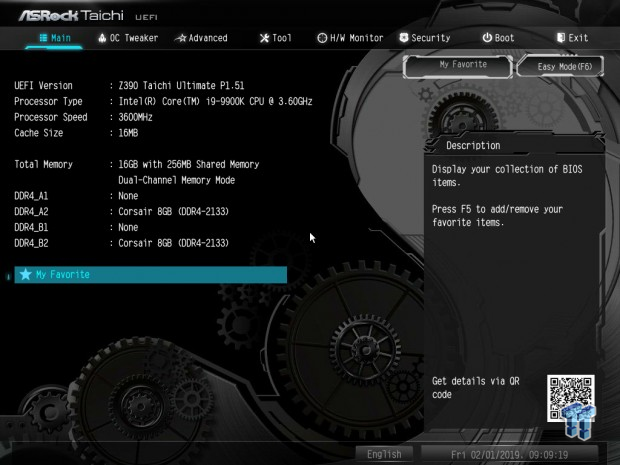
Here we have ASRock's Z390 UEFI is pretty much just like their Z370 UEFI and their other UEFIs. There are two operation modes in the UEFI, we like the advanced mode since all the overclocking settings are there. Fan control is present in both GUI and manual input form.

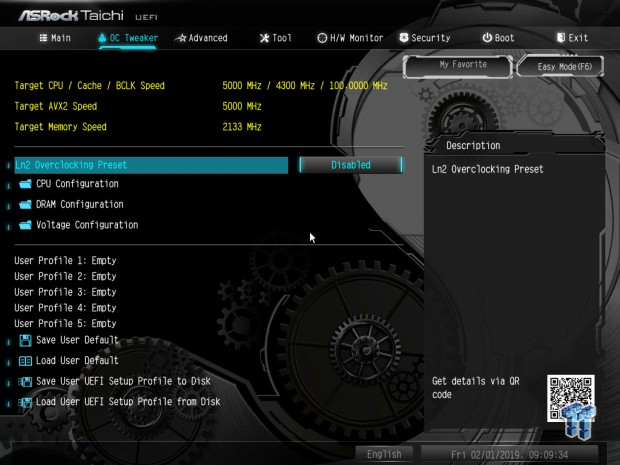

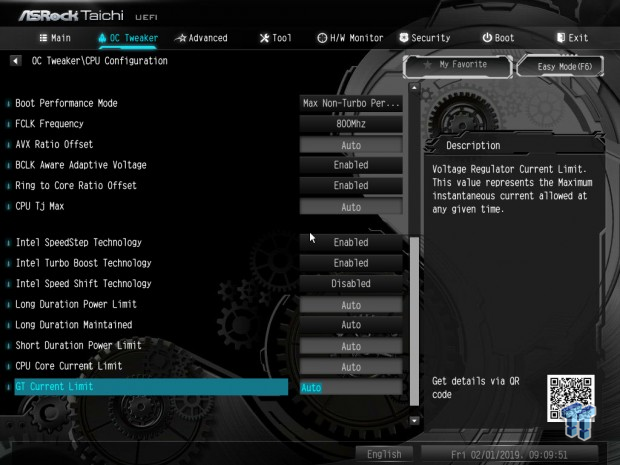
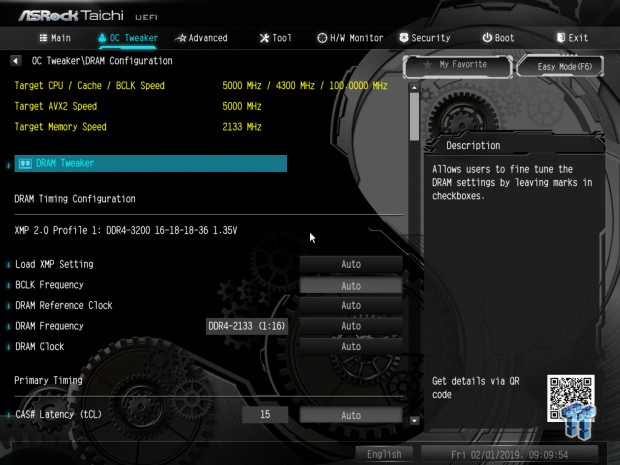
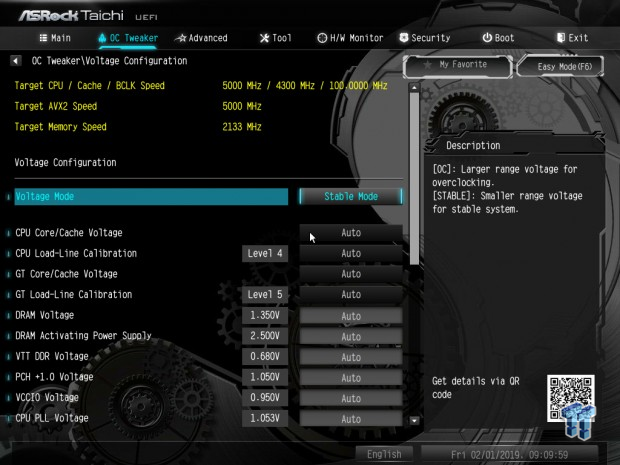
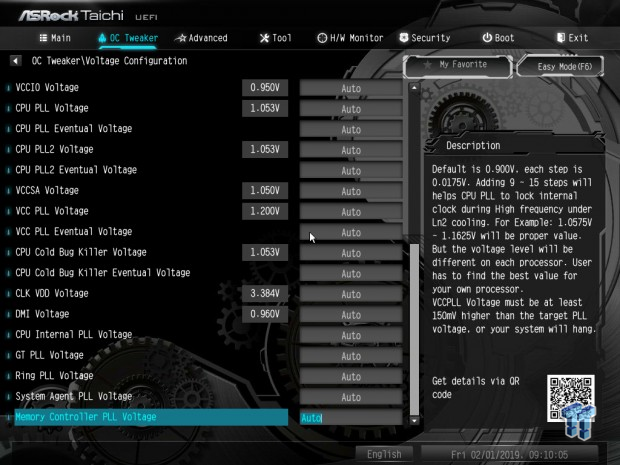
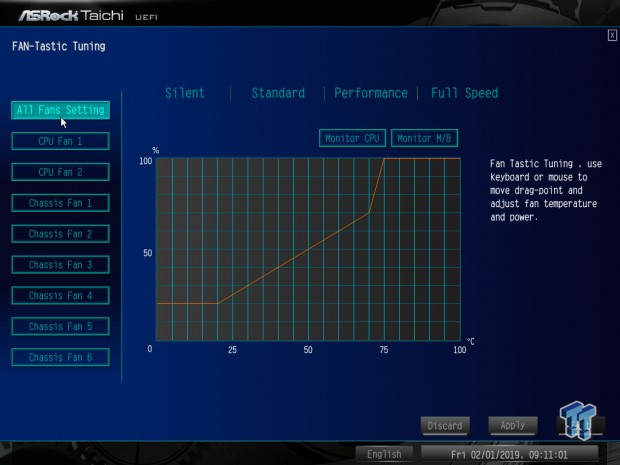
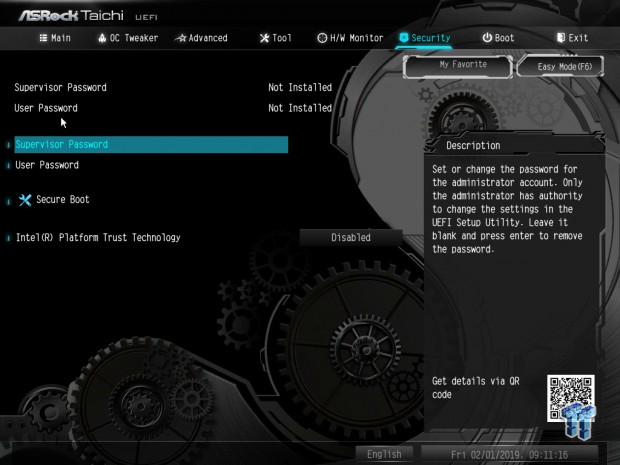
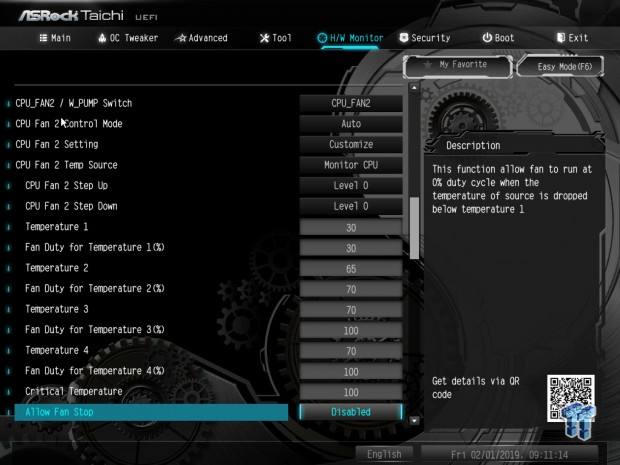
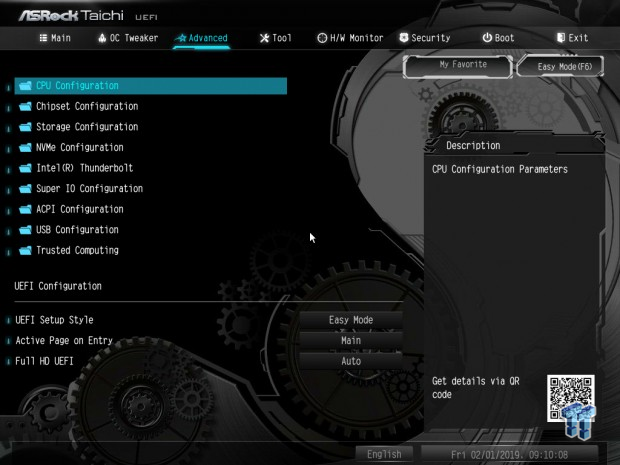
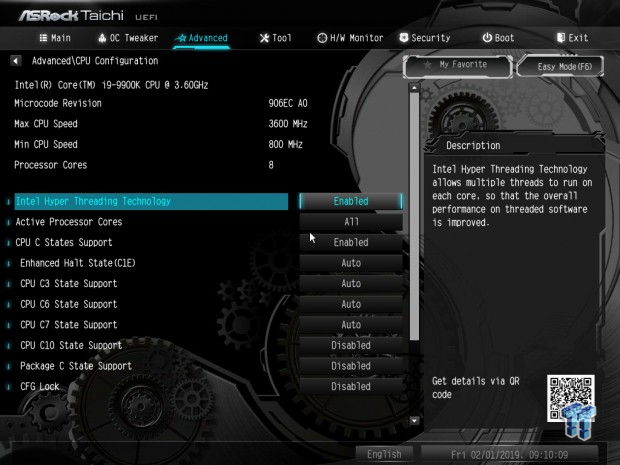
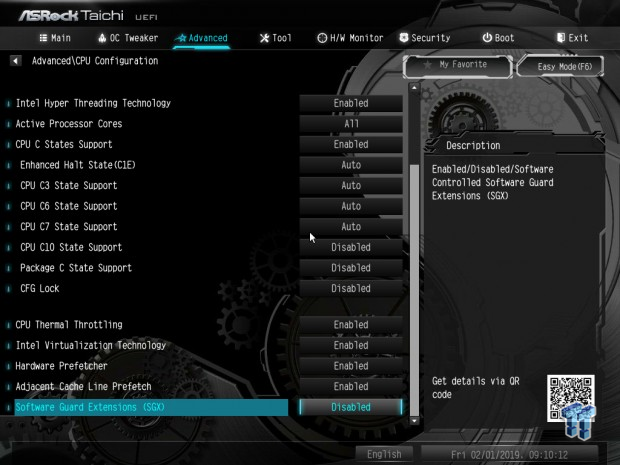
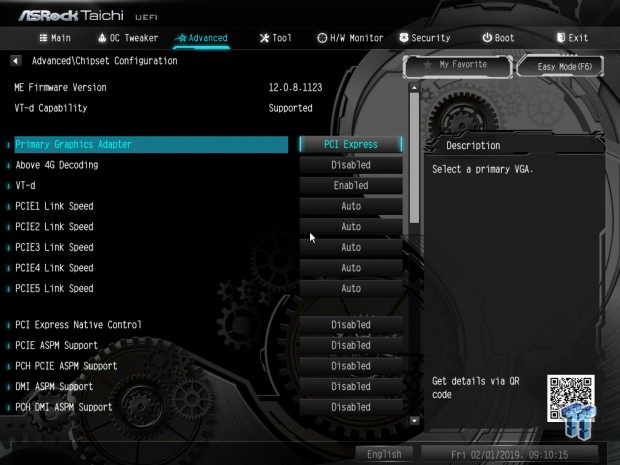
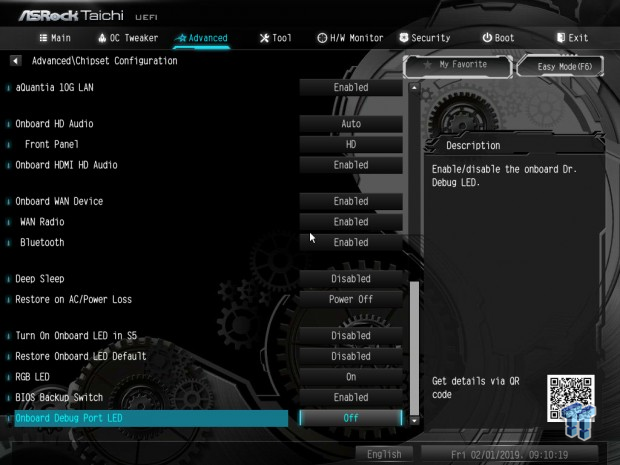
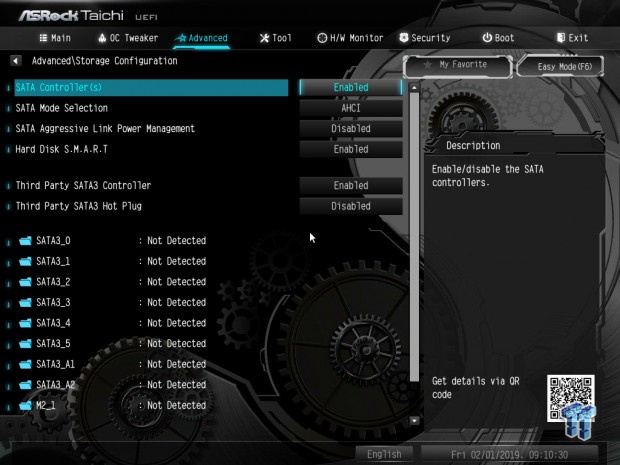
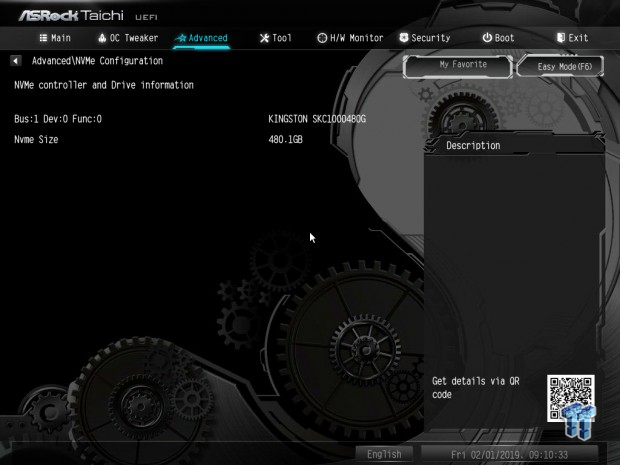
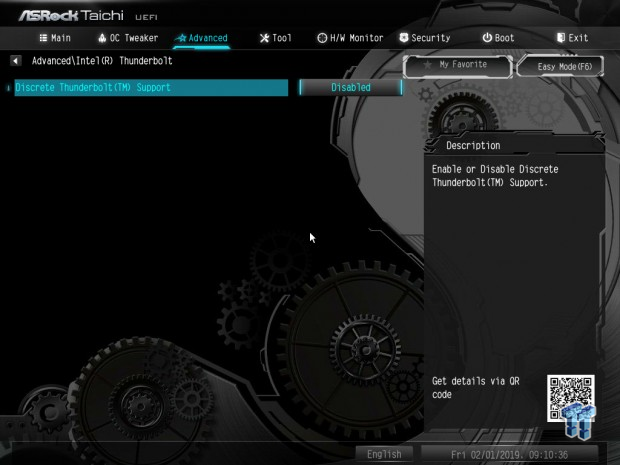
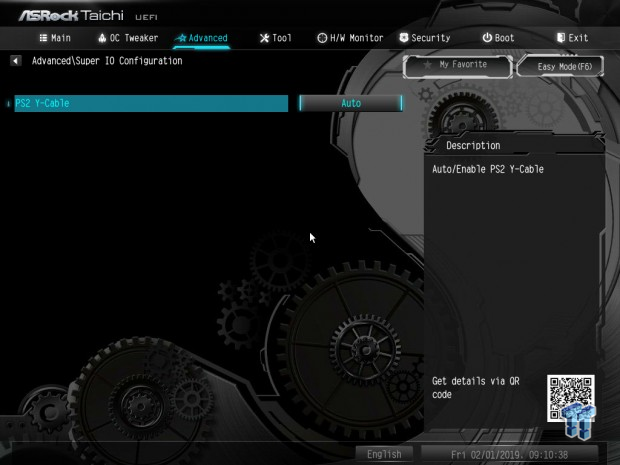
Software
We get A-Tuning, Polychrome RGB, and XFast LAN for software.
Test System Setup
Steven's Motherboard Test System Specifications
- Motherboard: ASRock Z390 Taichi Ultimate
- CPU: Intel Core i9 9900K
- Cooler: Corsair H110 - Buy from Amazon
- Memory: Corsair Dominator Platinum (2x8GB) 3200MHz
- Video Card: NVIDIA GeForce GTX 1080 Ti FE - Buy from Amazon / Read our review
- Storage - Boot Drive: Kingston KC1000 480GB - Buy from Amazon / Read our review
- Storage - SATA6G Drive: Corsair Force LS 240GB - Buy from Amazon / Read our review
- Storage - M.2 Drive: Intel 750 400GB U.2
- Storage - USB Drive: Corsair Voyager GS 64GB - Buy from Amazon / Read our review
- Case: Corsair Obsidian 900D - Buy from Amazon / Read our review
- Power Supply: Corsair RM1000 - Buy from Amazon / Read our review
- OS: Microsoft Windows 10 - Buy from Amazon
- Monitor: EVGA PA328 ProArt 32" 4K - Buy from Amazon
- Keyboard: Corsair K70 LUX - Buy from Amazon
- Mouse: Corsair M65 PRO RGB - Buy from Amazon / Read our review
- Headset: Corsair VOID RGB Wireless - Buy from Amazon / Read our review
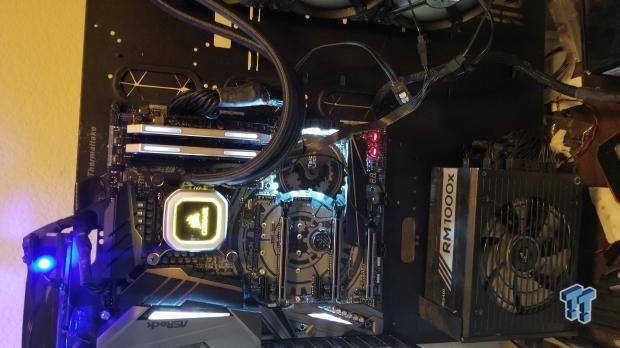
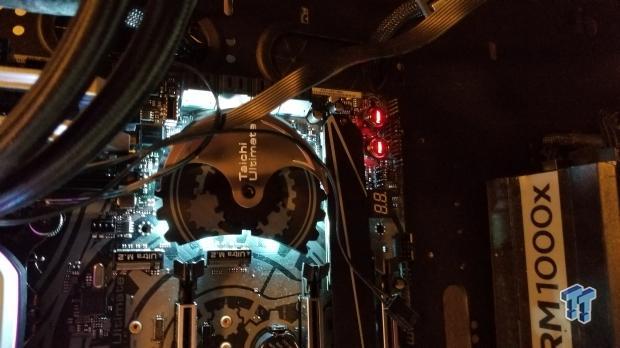
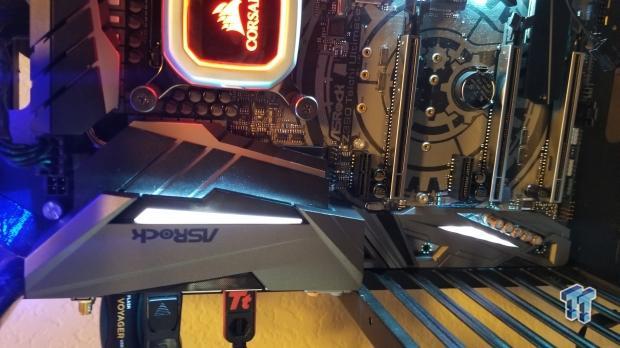
The Z390 Taichi Ultimate has some decent RGB LED game, but the PCH LEDs will be dimmed when a GPU is installed over them.
Overclocking
Overclocking Results
CPU Overclocking
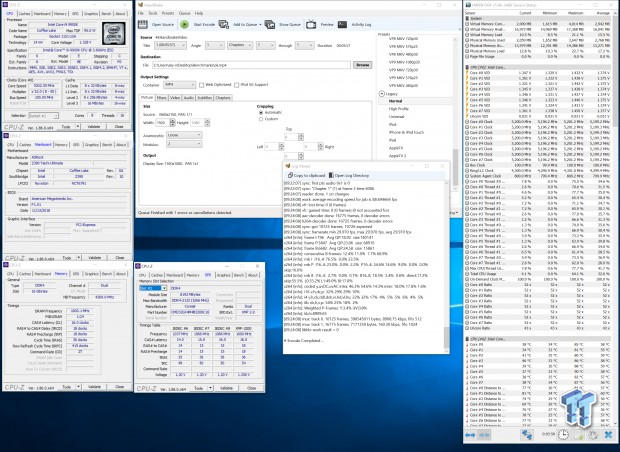
The Z390 Taichi Ultimate overclocked really easily to 5.2GHz with XMP. We manually set voltage to 1.325 with LLC level 2, but then we needed to set LLC Level 1 (auto rule) to make things more stable. The BIOS has LN2 preset settings and tons of voltages only used for liquid nitrogen overclocking, which I think this motherboard was designed to do.
CPU, Memory, and System Benchmarks
CINEBENCH 15
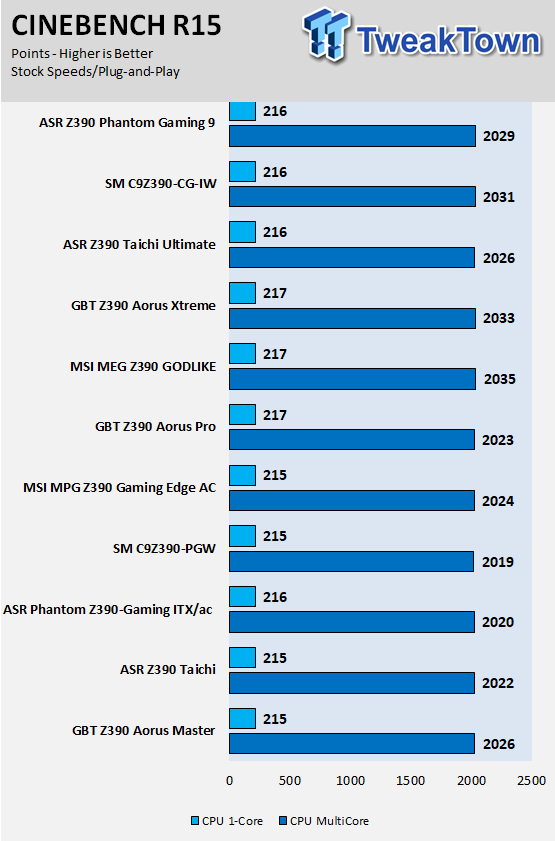
wPrime
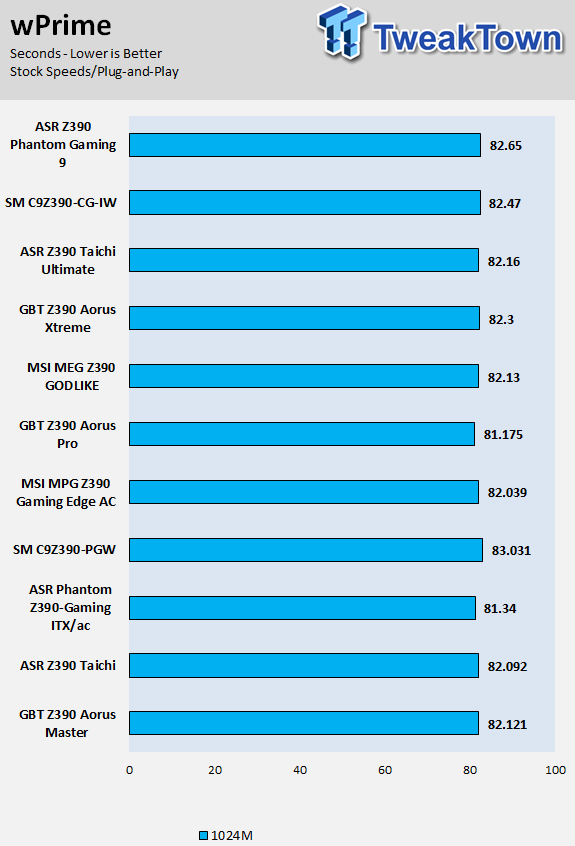
AIDA64 FLOPS and IOPS
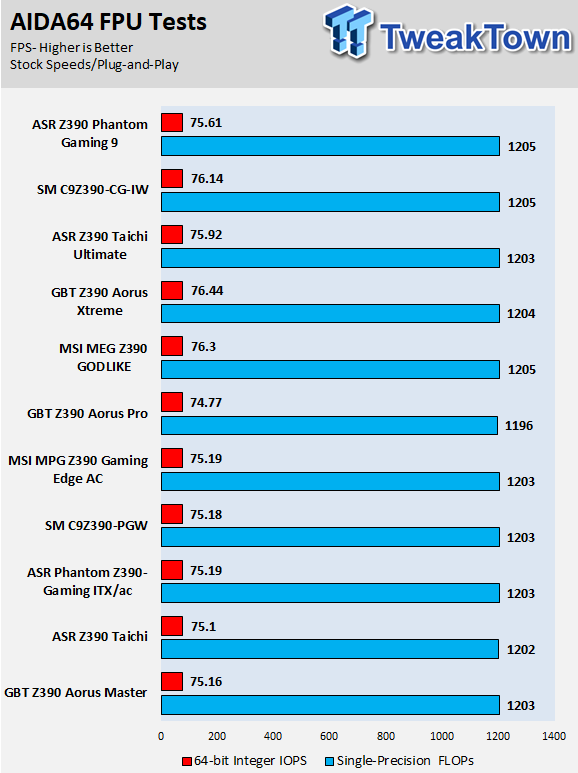
AIDA64 Memory
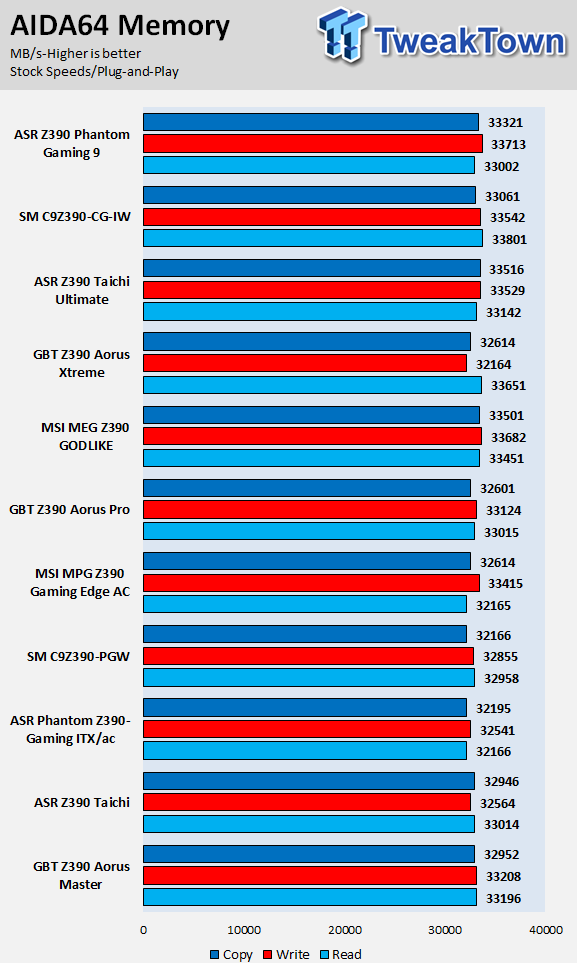
ScienceMark

HandBrake

3DMark: Fire Strike
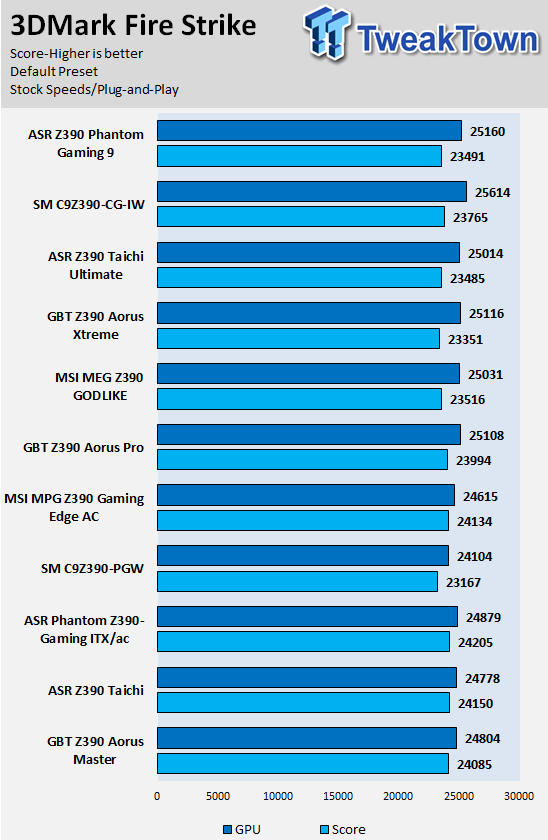
3DMark: Cloud Gate
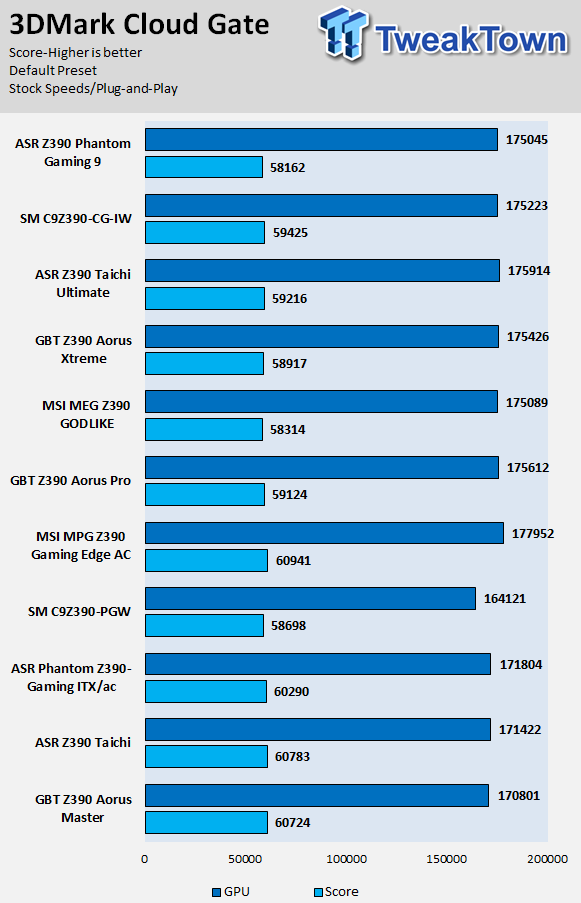
ResidentEvil 6
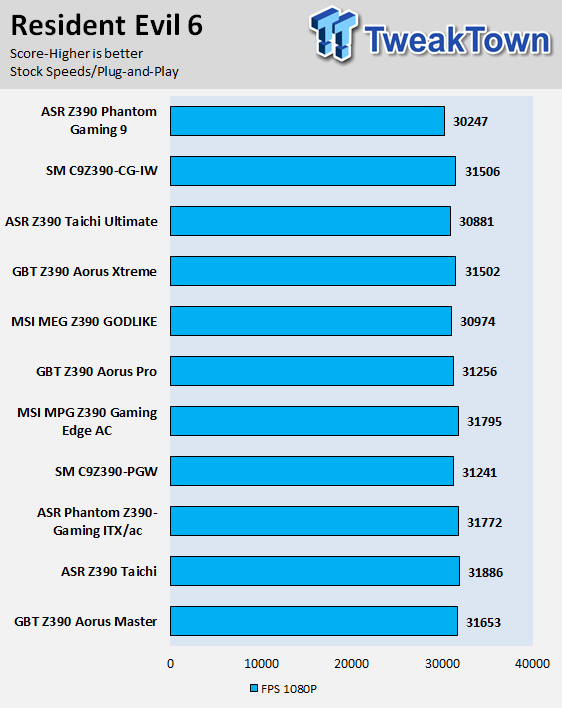
Overall, performance is solid and looks great. There were no performance issues.
System IO Benchmarks
CrystalDiskMark SATA6G:
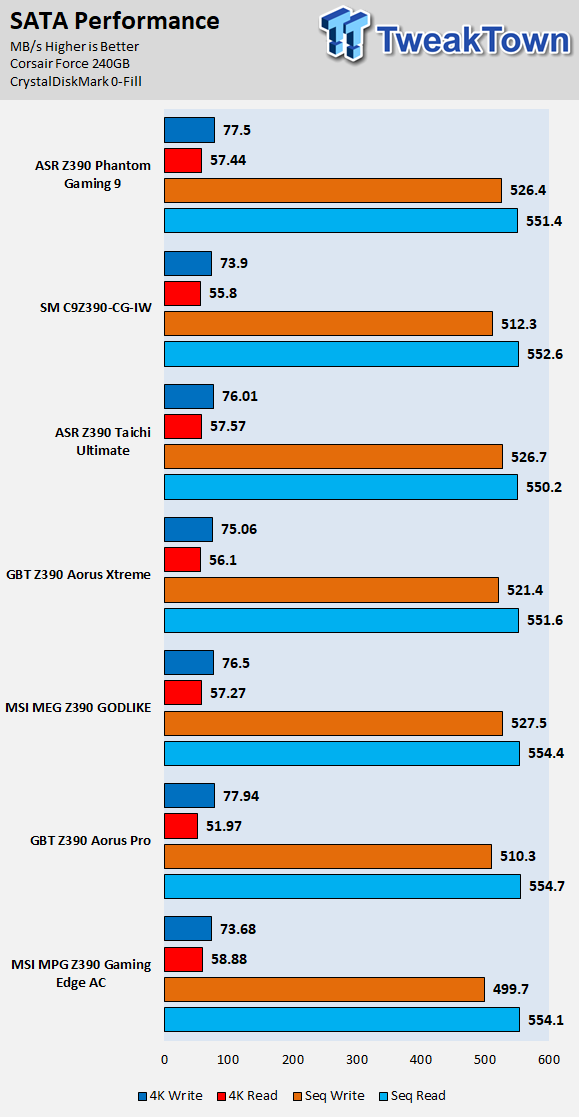
CrystalDiskMark M.2:
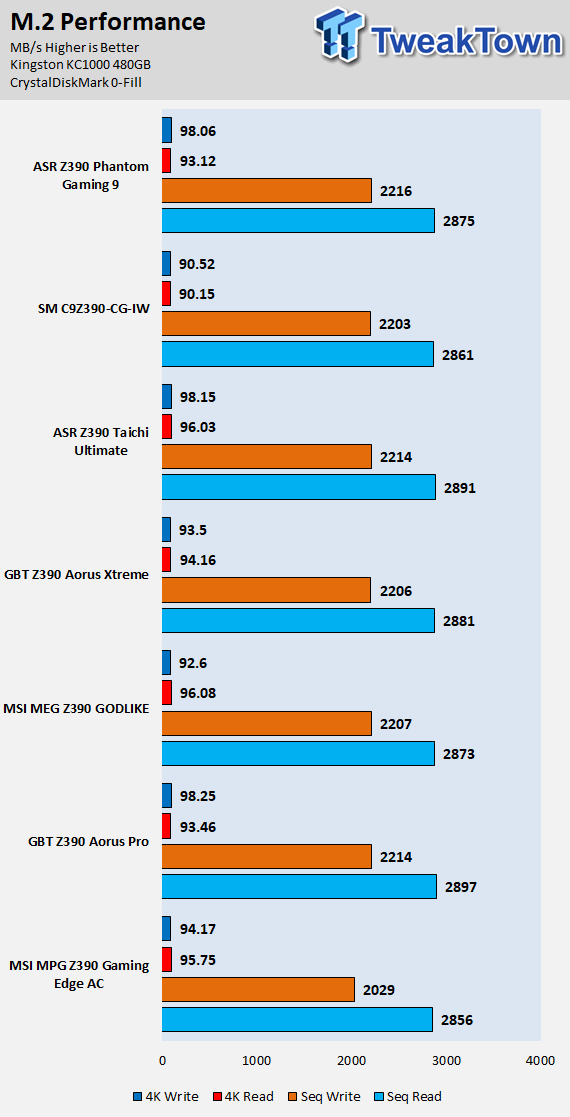
ixChariot Network Throughput:
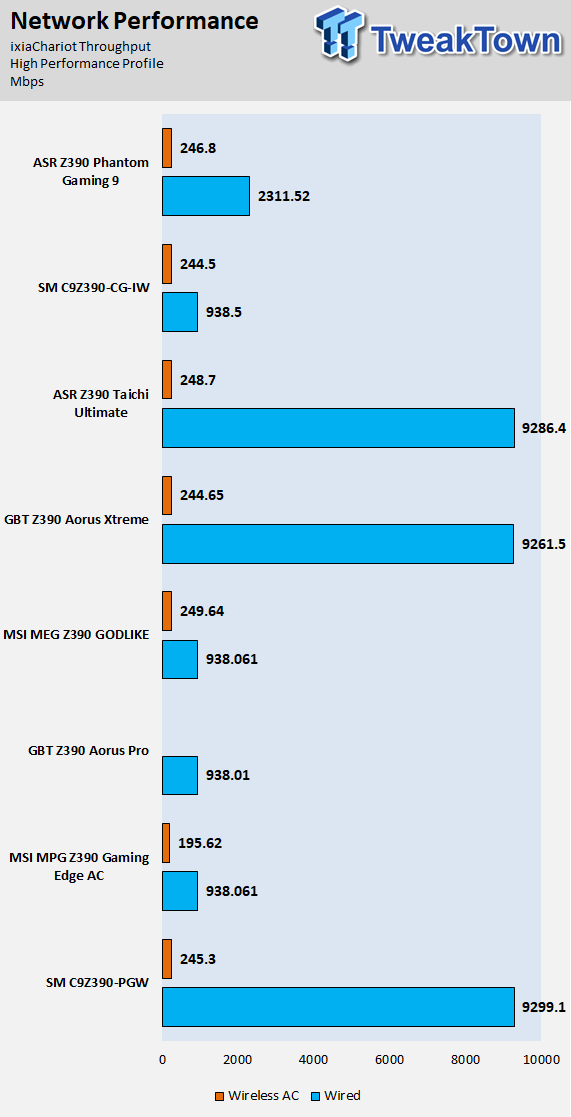
The storage and networking performance is solid.
Sound Judgment by Ear: Excellent, audio was very good. There are five ratings for audio: 1. Problems, 2. Okay, 3. Acceptable, 4. Very good, 5. Excellent
Thermal Imaging and Power Consumption
System power is measured at the wall with an AC power meter.
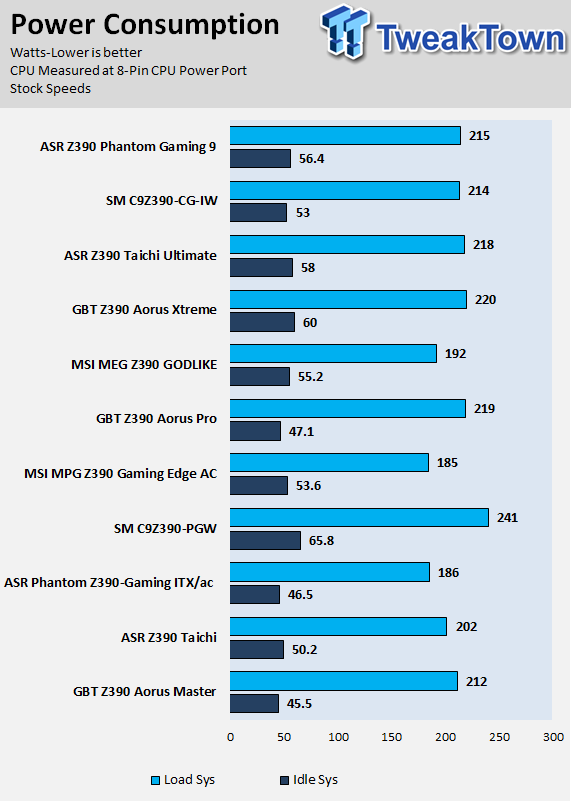
Note on Thermal Images: In the temperature section, we use our Seek thermal imaging camera to capture the surface temperatures of major components on the board. I look at the VRM and then all other things that light up the screen. If there is something to worry about, then I will state it. Otherwise, I will just show the hotter running parts of the board for fun. Unless some component is over 80-90C, then there isn't anything to worry about.
All systems will act differently, so I will look for commonalities, such as how far from the VRM the heat spreads through the PCB and the difference in temperature between the front side and back side of the PCB. Keep in mind, the majority of the heat from the VRM goes into the PCB as it is a giant soldered on copper heat sink. A larger difference in temperature between the back and front of the PCB points towards a more effective heat sink.
Thermal Testing at Stock Speeds:
The image on the left is always at idle, and the image on the right is at load. During ALL TESTS, fans to the right of the motherboard from the (Corsair H110i) radiator are left on automatic mode (ramps with internal block temperature). Additionally, a 120mm fan is situated right above the VRM, and it blows down at a medium rate (very quiet). Thermal Images are taken at loop 15 of Intel Burn Test
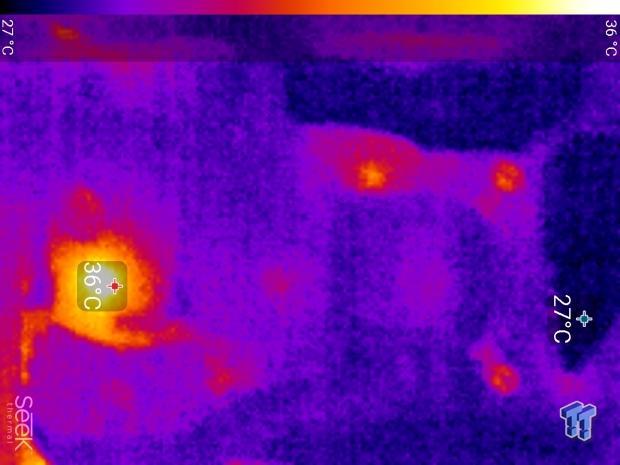
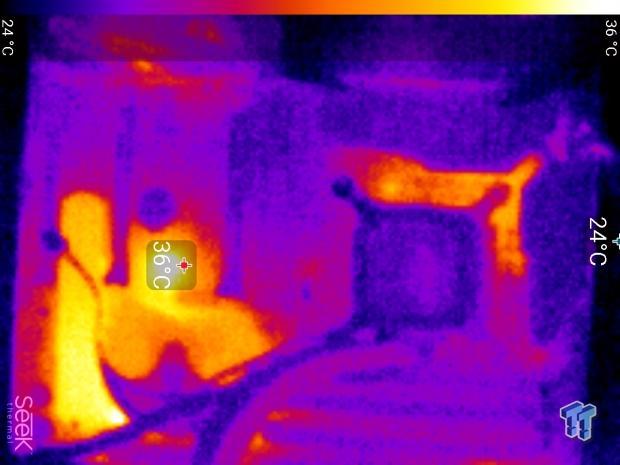
Full frontal.
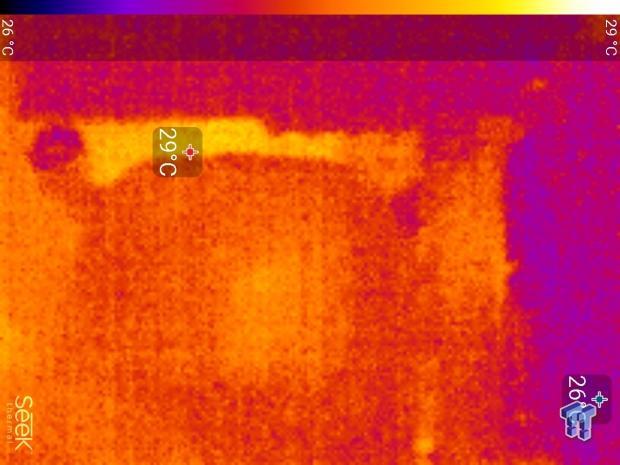
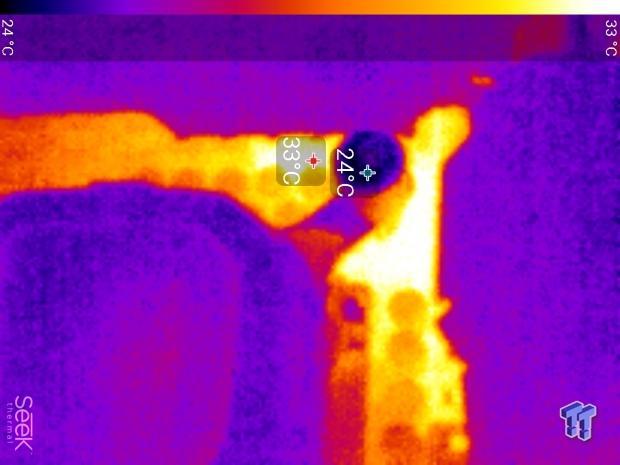
Up-close of the front of the VRM.
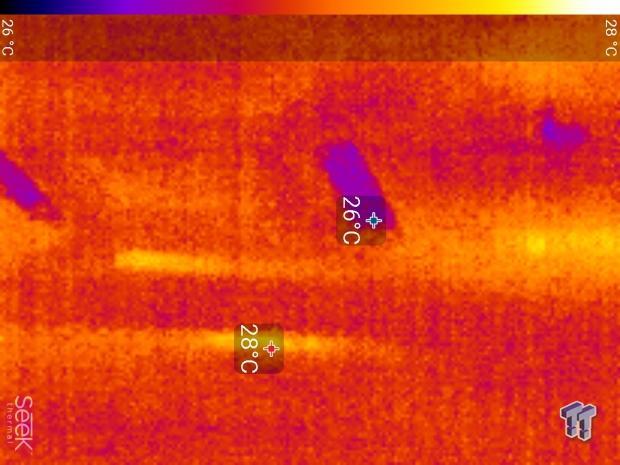

Up-close of the back of the VRM.
The Z390 Taichi Ultimate doesn't have the best VRM we have seen on boards almost twice its price, but VRM thermal performance at stock is excellent! Anything under 60C is great, 60-80C is acceptable, and anything above 80C is a bit worrisome (if at stock).
What's Hot, What's Not & Final Thoughts
What's Hot
Tons of features: The Taichi Ultimate has a serious number of features, including all platform features and those expanded upon by hubs. ASRock added in an extra SATA controller for two more ports, a hub so there are two internal USB 3.0 headers, and that's on top of the four NICs the motherboard has.
Networking: ASRock added in two Gbit Intel LAN ports, and Intel's Wireless AC 9260, which is actually a 2x2 controller. We typically find Intel's 1x1 controllers on ASRock's motherboard, but this time they moved things up a notch and added in the latest and greatest Intel WIFI card they could. The motherboard also features the Aquantia 10Gbit AQC107 controller, which is nice to see here.
Solid VRM: ASRock's VRM on this motherboard has been upgraded from the Z370 Taichi through the use of Texas Instruments NexFETs over those other lower specced units from Sinopower or Fairchild. We see some of these Sinopower MOSFETs used in the memory VRM, but that's fine. The VRM heat sink seems to do a solid job as per VRM thermal testing.
What's Not
None: Couldn't find anything, maybe it's a bit pricey compared to the normal Taichi?
Final Thoughts
Many people have loved the ASRock Taichi series for years, and for good reason. ASRock's Taichi series motherboards offer excellent value, features, and performance and aren't too pricey. In this case, ASRock delivers with the Taichi, and then tossed in high-end 10Gbit NIC.
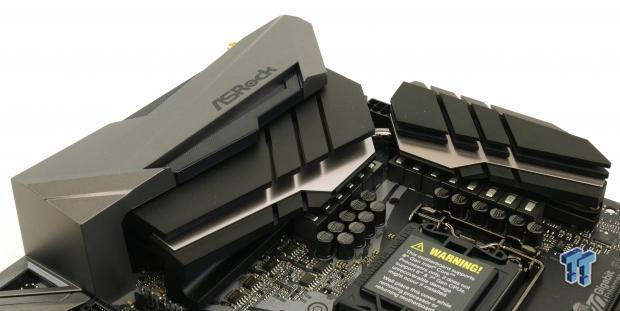
In the past ASRock has done this on their Performance Gaming 9 series, but it seems like they have taken the popularity of the Taichi brand name and renamed that model. There is a Phantom Gaming 9 motherboard as well, but that is much more tailored to gamers. Overall, if you want a solid all-around motherboard with 10Gbit LAN for your 9900K, give this motherboard a look.
